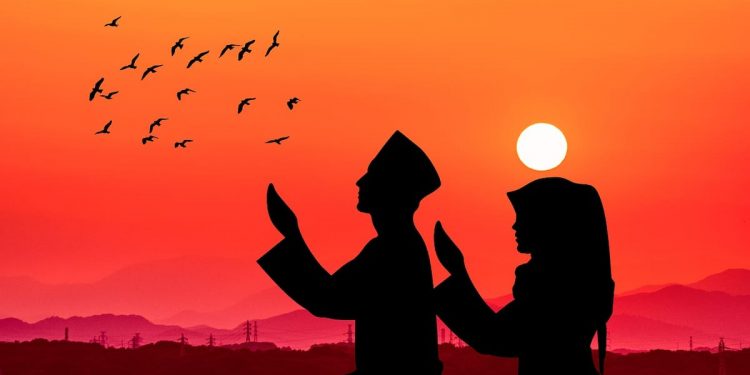Prayer time in Sharjah, for today Ash Shariqah United Arab Emirates are Fajar Prayer Time 05:13 AM, Dhuhur Prayer Time 12:02 PM, Asr Prayer Time 03:08 PM, Maghrib Prayer Time 05:30 PM, and Isha Prayer Time 07:00 PM. Get the most dependable Sharja Azan and Namaz times with both; week by week Salat timings and month-to-month Salah schedule. Let’s see about the prayer time in Sharjah.
Muslim Prayers: Salah timings, Adhan and Rakat
Salah, which means petition or request, is otherwise called Namaz among non-Arab Muslims. Salah is one of the five mainstays of Islam, which structure the center convictions and practices of the religion. The five columns are:
Salah is required for grown-up Muslims and supplication times are set by the development of the Sun and performed five times each day as follows:
Fajr: Dawn, before dawn
Dhuhr: Midday, after the sun passes its most elevated point
Asr: The late piece of the evening
Maghrib: After dusk sundown
Isha: Between sunset and 12 PM
Prayer time Sharjah: Praying in the Mosque
Muslims can implore any place. In any case, numerous Muslims implore in gathering in a masjid. A masjid is a position of love for Muslims. Imploring together in an assemblage assists Muslims with understanding that all humankind is every last one is equivalent under the eyes of God.
Jumuah
Aside from the five everyday supplications, there is a required Friday (Jumuah) petition. This supplication is presented in an assemblage with a message on Fridays, instead of the early afternoon petition.
Adhan
The public call to petition is called Adhan. The Adhan is conveyed from the masjid by, the muezzin masjid’s assigned guest of supplication. During the call to supplication, the muezzin discusses the accompanying Takbir (glorification of God) “Allahu akbar”, which deciphers as “Allah is incredible”.
Importance of Adhan
The Adhan is conveyed five times each day to welcome Muslims to perform compulsory supplications. It is normal to hear the call to petition openly in nations with critical Muslim populaces. The Adhan is generally discussed from the minaret of masjids and is normally conveyed looking towards the Holy Kaaba in Makkah.
Performing wudu before salah
Wudu is bathing or a demonstration of washing the body prior to performing petitions or the recitation of the Holy Quran.
Rakats in Salah
A rakat comprises of the suggested developments and recitation of refrains of the Holy Quran rehearsed by Muslims while offering supplications to Allah. It likewise alludes to a solitary unit of Islamic supplications.
Fajr
Fajr salah ought to be acted in the last piece of the evening and before dawn. It comprises of two compulsory rakats, known as Fard.
Dhuhr
Dhuhr salah is the second petition of the day and is presented around the early afternoon. This supplication contains four mandatory rakats.
Asr
Asar salah is acted in the early evening after the Dhuhr petition. This petition contains four required rakats.
Maghrib
Maghrib salah ought to be presented at dusk. Magrib salah comprises of three compulsory rakats.
Isha
The fifth petition of the day is the Isha salah. It incorporates four compulsory rakats.
The benefits of various positions while performing salah
There are different positions while performing salah, which incorporate Qiyam, Ruku, Sajdah, and Tashshhud. There are various advantages in these activities, for example,
An electric car or battery-electric vehicle is an auto that is moved by at least one electric engine, utilizing energy put away in batteries. Contrasted with inward burning motor (ICE) vehicles, electric vehicles are calmer, have no exhaust discharges, and lower emanations in general. Charging an electric vehicle should be possible at an assortment of charging stations; these charging stations can be introduced in the two houses and public regions. The Tesla Model 3 turned into the world’s record-breaking smash hit the electric vehicle in mid-2020 and in June 2021, turned into the primary electric vehicle to pass 1 million worldwide sales. Earlier models with boundless reception incorporate the Japanese Mitsubishi I-MiEV and the Nissan Leaf.
There are different positions while performing salah, which incorporate Qiyam, Ruku, Sajdah, and Tashshhud. There are various advantages in these activities, for example,
Qiyam (standing): It guarantees a legitimate bloodstream to the lower part of the body, fortifying the leg muscles.
Ruku (bowing): This stance is useful for the lower vertebral segment. It diminishes and forestalls back torment. It includes extending elbows, wrists, knees, and lower legs, subsequently creating adaptability around this multitude of spaces of the body.
Sajdah (surrender): The demonstration of low bowing or surrender to God towards the qiblah. Sajdah keeps up with the bloodstream to the cerebrum and invigorates the pituitary organ and pineal organ.
Tashahhud (sitting stance): The stance is like the Vajrasana, a critical Yoga position. The position is said to fortify the thigh and lower leg muscles, further develop absorption, and keep the spine straight and erect.




![The Top & Most Popular Seafood Bucket Restaurants in Dubai for you [Never Miss]](https://uae24x7.com/wp-content/uploads/2020/09/8-seafood-in-a-bucket-scaled-e1600739237403.jpg)
![Procedures for Renewing the Driving License in Abu Dhabi [3 Simple Steps]](https://uae24x7.com/wp-content/uploads/2020/07/Capture-9-e1595666454466.jpg)





